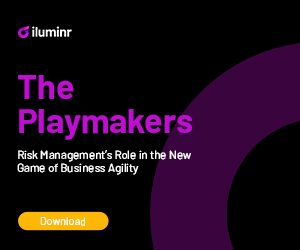Matt Doernhoefer - Winner of Private Sector Professional for the BCI Americas Awards 2020

This year I was honored to be awarded the BCI Private Sector Professional of the year for the Americas. What I did not expect is that I would experience the equivalent to the Kobayashi Maru scenario of business continuity. Star Trek fans, you can skip to the next paragraph. For those unaware, the Kobayashi Maru is a legendary test in the fictional Starfleet Academy known to be completely unwinnable. The scenario presents no good options ranging from going down with the ship and causing an interstellar incident to leaving innocent people to certain destruction. The scenario is meant to teach cadets that there are situations where there is no victory, and that the key in that situation is to redefine the problem and manage an insurmountable scenario gracefully.
So where does that leave the Business Continuity professional where it is our job to operate outside the bounds of normal business? How can we deal with a truly insurmountable scenario? How can we admit to ourselves and operate within a truly no-win scenario and more importantly, get our executives to understand that we are in a no-win scenario and to not become paralyzed by it? By the way BCI, if you’re looking for an ultra-hard test for FBCI come see me - I have you covered.
I am an observer from the inside though I do not have any direct direction on the overall response. That has afforded me the privilege of being able to watch, take notes, and learn. I have learned quite a few lessons even as this crisis still plays out.
Here is a brief description of the current situation:
- Operational costs are extremely high and are defined by others such as labor unions, suppliers, etc.
- Demand for your product crashed. Revenue dropped 90% in less than 60 days and continues to remain low, and is predicted to remain below sustainability for at least another year, potentially longer.
- Demand generation is entirely outside of your control. No amount of marketing, advertising, or deals will increase demand.
- Your company is highly regulated by both national and international regulations on where, when, and how you can operate. Your industry is classified as “critical infrastructure” and must keep operating. Shutting down entirely and going into hibernation is not an option.
- Your company has powerful unions with the ability to shut down your operation should you cross them.
- Aid from the federal government is possible, but comes at a high political and public image cost, and usually is not enough to meet your requirements.
- More money is flowing out of your company from refund requests of undelivered product and no new money is coming in for the future. This is draining your cash reserve as well as taking away from any potential capital rounds.
- Your company primarily owns depreciable assets, and most of those are worthless for the purpose of collateralization and loans. Further, if you mortgage too much, you risk taking on more debt than you can service reasonably for any future ramp up in demand.
- Your company’s public image is already tarnished from recent prior incidents. Nearly any survival actions you take will be met with backlash, or result in reduced income which you desperately need.
This scenario has taught me humility, and the benefit of “radical acceptance” in scenarios like this. The humility part comes from learning that no matter how well planned, well prepared, or your skill at business continuity there will be events and scenarios that you cannot control. At best, all you can do is ride the scenario and work with the events as they happen and manage.
Radical acceptance is a dialectical behavioral therapy (DBT) strategy to help deal with loss, trauma, or other suffering. It is a strategy where you are accepting life on life’s terms and not resisting what you cannot change. This sounds incredibly simple, but from my personal experience is incredibly difficult for someone who prefers to have responses and plans ready for everything. It is a healthy way to execute because rather than wasting energy on fighting the situation, it allows us to focus on dealing with the situation rather than ruminating over the factors that lead to it. Note – this is not accepting the situation as “good” or “okay”, it merely acknowledges dispassionately that it exists and understanding that there are no levers to pull to fix it.
Once we have convinced ourselves that this is a no-win scenario, how do we convince others? The critical goal is to head off circular reasoning and focus on solving the problems as they arise and have the ability to make the least damaging solution. I think there are several ways we can help, but also consider this an appeal to comment on others.
- During wargame scenarios, use the “I believe” button - Working with your executives to understand that unthinkable test scenarios may happen would allow them to prepare for being able to make decisions during it. Rather than fight the scenario, force them to radically accept the scenario as presented and understood.
- Have a simple set of “north stars” – These points can help guide the decision-making process. Statements such as “We want to keep as many staff as possible” can help guide in making the least bad decisions and allow you to sacrifice what you can. They have to be simple and concrete though otherwise it leaves rooms for discussions of personal priorities over true leadership priorities.
- Don’t let perfect become the enemy of good – I find it is better to act in crises than not. The scenario is always changing and you do not know what may happen in the next 12, 24, or even 2 hours. Actions can always be course corrected; inactions are missed opportunities that will never arise again. The desire for a perfect solution only encourages the desire to wait and miss potential opportunities
Life has times where you can make all the right moves and still lose. Even worse when there are no right moves, and the challenge now becomes making decisions at all knowing that there are real consequences to your actions. Unfortunately, whether we like it or not, life will make decisions for us even if we choose not to. Analysis paralysis is a real issue and is only exacerbated when the options presented are less than palatable. The lessons I have learned, and hope to teach are that it is better to actively make decisions if only for having the agency to do so. Hopefully training ourselves to react better in no-win scenarios can help us prepare to train others for the worst-case situation.

